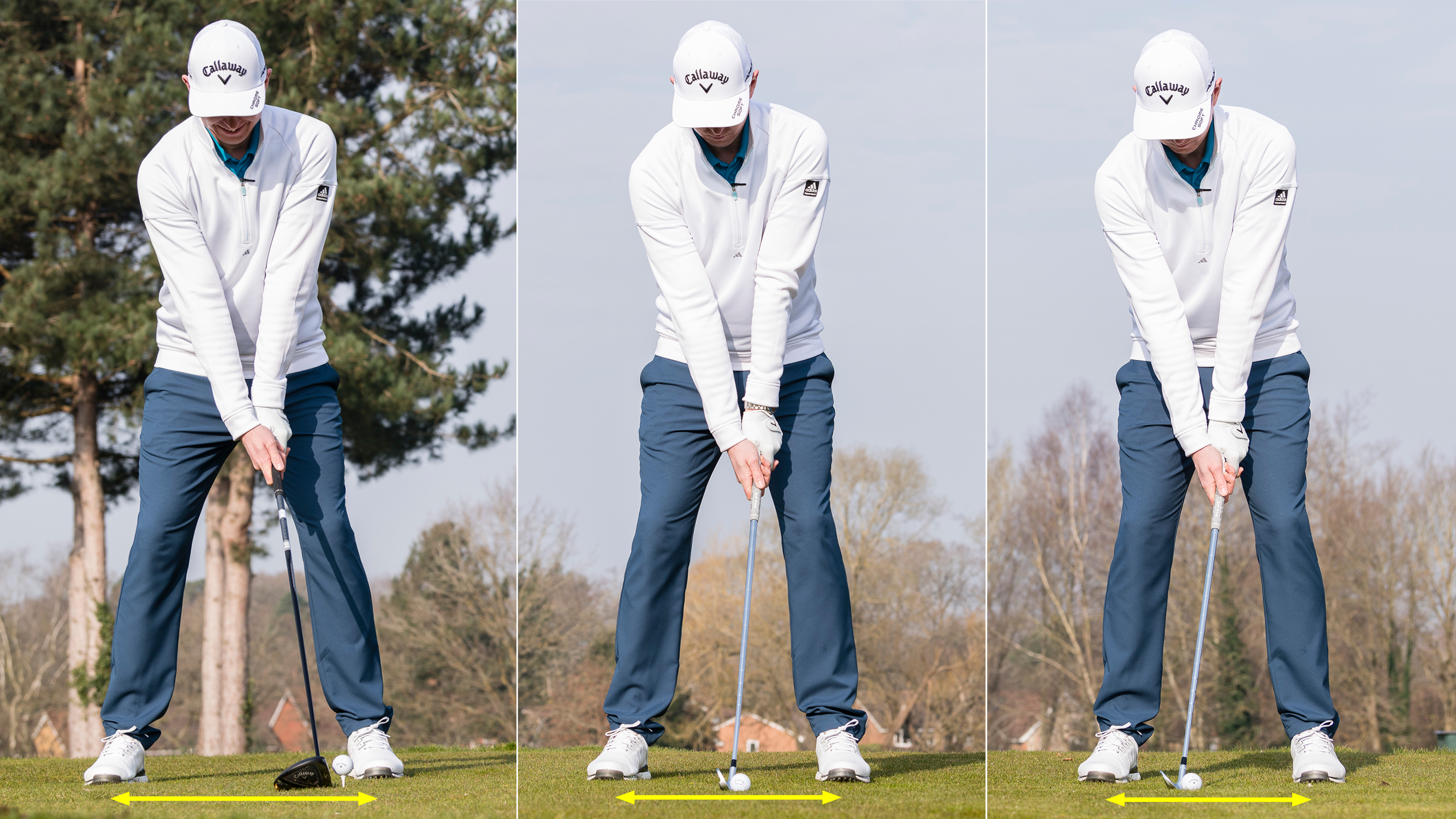
Golf Monthly created this content as part of a paid partnership with Callaway. The contents of this article are entirely independent and solely reflect the editorial opinion of Golf Monthly.
Having the correct stance width is a basic fundamental of the golf swing, and it's one that can dramatically improve the consistency and quality of your ball striking. Mastering this crucial aspect of the setup will also ensure you have the perfect ball position with every club, preventing many common swing faults for amateurs.
In this video and article, Golf Monthly Top 50 Coach Ben Emerson shares his top tips for finding the correct stance width in the golf swing...
How Wide Should Your Golf Stance Be?
When focusing on your stance width, you need to be clear on what you are trying to achieve. In essence, you are looking for a strong stable base and a turn that helps you move away from and back towards the target.
In many ways, these two aspects work in opposition, so a certain level of balance is required. The extent of this varies from club to club, but the general rule is the longer the club, the wider your stance should be.
This is due to the additional shaft length, which creates more clubhead speed, requiring the stability provided by a wider stance. You should note, however, that if your stance gets too wide, the mobility and weight transfer in your swing will be more restricted. This could lead to a reduction in power, which is why it's crucial to strike the right balance.
Driver
With the correct driver address position, you’re looking to establish a base that will provide stability and speed. To do this, start by setting the ball up inside the heel of your lead foot - use alignment sticks when practising to make this easier.
Crucially, your hands should hang down naturally from your address position - do not push your hards towards the target, this will de-loft the club and cause problems through the impact position.

Having your feet shoulder width apart is a great baseline and from there, take one more step away from the target with your trail foot to set the ideal base from which to produce power. By doing this you should also feel how your weight moves towards your trail foot - this is ideal for driving.
Irons
But what about when you’re not trying to hit the ball as hard? When hitting a 7-iron for example, you still want stability but you don’t need the same width as with the driver. Again, shoulder width apart is a great starting point, with the ball just a fraction forward of centre.
From here, widen the stance ever so slightly and you’ll be in the perfect position to rotate from a stable platform. Get this right and you'll be able to master the ideal weight distribution in the golf swing.

Wedges
Finally, moving on to wedges, and this is an area of the game that’s all about finesse, so you don’t need as stable a base. All you need is a stance that’s going to keep you in balance, allowing you to retain control while you rotate back and through. On full shots, around shoulder width apart works well and that can be made narrower as you approach the green and the swing length reduces.
One Final Checkpoint...
You shouldn't look at stance width in isolation without also checking the position of your sternum. Quite simply, it should be directly above the middle of your stance, regardless of which club you have in hand.
If your sternum moves towards the target, so too will your weight and this could cause thin strikes and low trajectories. Too far back and you'll be in danger of hitting heavy shots. If your stance width and sternum are both in the correct position, you'll have a much better chance of hitting the ball sweetly.







